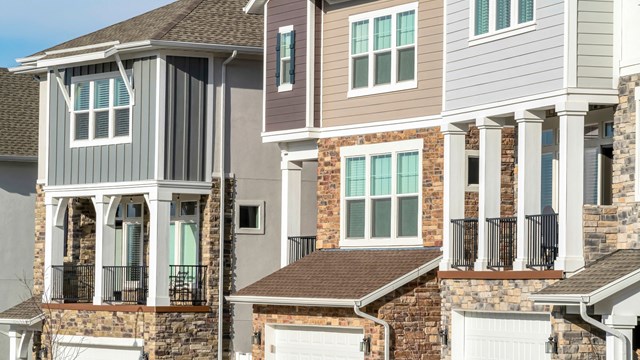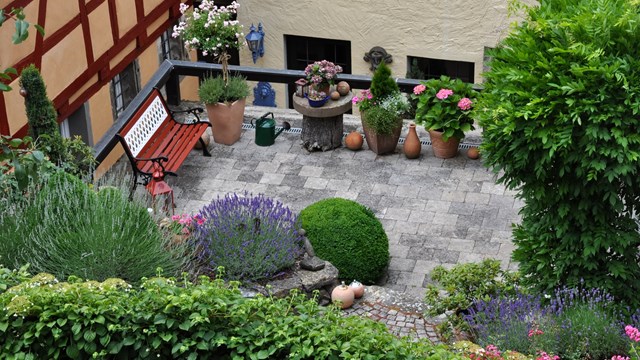Whether it’s a balcony, terrace, patio or roof deck, outdoor space is many an apartment owner’s dream. Desirable – and valuable – as they are, these spaces do present specific maintenance considerations for individual owners, co-op corporations, and condo associations, however. Oftentimes, these considerations are complicated by the fact that without specific knowledge of engineering and construction, the signs of potential problems in these spaces are too easily missed.
The Main Culprit
Perhaps unsurprisingly, when structural issues afflict outdoor spaces in modern buildings, the main culprit is water —and culprit 1A is water mixed with salt. Water causes rust and salt can accelerate the process. Whether in a cold or warm climate, these two basic building blocks of life can combine to erode structures. Alan Gaynor, Founding Principal at Boddewyn Gaynor Architects in New York City, explains: “If water gets between concrete and brick and the structure is not flashed properly, it will rust out the reinforcement bars,” which are a critical component in modern construction.
Michele Boddewyn, President of Boddewyn Gaynor Architects, adds that “snow melts, and the salt greatly reduces the freezing temperature of water, so the water can do additional damage.” Gaynor adds that salt can be the biggest issue, because it’s corrosive enough to rot steel over time. “Amenities like balconies and terraces are vulnerable to weather and wind,” he says. “They don’t get used continually, so the problem can go unnoticed for a long time.”
According to Ross Catanzarite, a principal with The Accent Group, a full-service construction company in Nutley: “With many varying products and options on the market, it’s common practice to frequently inspect and ensure proper water drainage. This can be done by clearing any obstructions of the drainage system at least twice a year, or when an issue is recognized. The best time to inspect for any damaged seams or openings in the deck or terrace membrane that could allow the possibility for water infiltration is during and after the leaves fall. Additionally, all railing connectors should be inspected for corrosion that could also provide an opening for water to penetrate the deck surface.”
Man-Made Problems
In addition to weather, spaces such as balconies, terraces, and roof decks can be damaged by the very people lucky enough to have them. The biggest and most dangerous of these man-made issues is overloading. Too much weight can, in the extreme, cause the balcony or terrace to collapse. “Balconies are designed for moderate to average loads,” says Boddewyn. “We are familiar with a situation where a contractor was storing building materials on a balcony. Their weight greatly exceeded what was intended for the balcony, and began to cause a problem.” The contractor had to remove the items immediately, and fortunately no one was injured—or worse.
Marcy Kravit, Managing Director with AKAM On-Site, a property management firm in southeast Florida, describes an incident in which a condominium owner placed a hot tub on a balcony. Nice idea, but once the tub was filled with hundreds of gallons of water, it was far too heavy for the structure. The attorney for the association notified the resident in writing that the hot tub had to be removed immediately.
In terms of terraces, weight issues can be a subtler threat. The downstairs neighbor may in fact be the ‘canary in the coal mine’ who raises the alarm when something is amiss overhead. Damage caused by water infiltrating the floor of a terrace, or by excessive weight, may be more noticeable on the ceiling of a downstairs neighbor than on the terrace itself. With roof decks, the question may be even more complicated and may depend on whether the deck was part of the original design of the property or added later.
“The big difference between a building designed with the intention of including a roof deck, or a building where one is added later, is that most roofs are designed for a certain amount of snow load based on building code relative to your climate zone,” says Boddewyn. “The first big question is to determine what the original weight capacity for the roof was, because it’s very easy to exceed the load capacity when you’re adding pavers, planters with large bushes or trees, furniture and people. Are you working within the building’s physical capacity?”
Monitoring for Safety
To maintain the integrity of exterior spaces, inspections should be made on a regular basis. “Once a year in the spring is the best option,” says Boddewyn. “This gives you the summer to make any necessary repairs.” Gaynor urges that, “inspections should be done by professionals – untrained owners might not know what to look for. Most buildings have a building architect, and they should do the inspection. If not, hire a building envelope consultant to do the job.” Building envelope consultants are engineers who are experts in all the elements of a building shell that keep the structure dry, heated or cooled, and maintain and facilitate a building’s climate control.
“We also do periodic inspections for rules compliance for storage issues,” Kravit says. She explains that most associations in Florida have very specific and strict rules relative to what can and can’t be placed on balconies and terraces, particularly when it comes to hurricane season. Generally, when a hurricane is predicted, only patio furniture can be left on balconies, terraces, decks and patios; everything else must be brought inside, and hurricane shutters drawn down. Anything and everything can turn into a projectile during a hurricane, so securing outdoor spaces is crucial for protecting both property and physical safety.
In addition, because of the fire risk, most associations—in Florida and elsewhere—prohibit keeping grills of any kind on balconies, terraces, roof decks, and even some patios. In the case of patios, Kravit explains, some associations will permit grills, but they must be kept at a specified distance from the building, which is why some owners seek out ground floor apartments.
Mold
Another problem more common in damp climates, but of concern in any community, is mold. “Carpet on balconies has been outlawed in many communities because of this issue,” says Kravit. “Some no longer even permit tile—which can hold water in and damage concrete.” AKAM manages a building in Hallandale Beach, Florida, which recently undertook a large project to repair concrete work that included balconies. They have prohibited any type of floor covering on balconies to prevent future damage. Instead, they are using a decorative seal coating on all balconies that will be uniform throughout.
Colder Climes
In terms of correcting weather damage in colder climates, Gaynor suggests that instead of just patching cracked concrete, a sealant should be used to prevent future water-based damage. “When a building is constructed,” he says, “balconies should have a slight slope to them to keep the water flowing off them. That keeps the water away from the joint between the building and the balcony structure. That’s the spot that fails. Proper waterproofing is critical. You can’t give the water a point of entry.”
Terraces are not much different. They are not flat, but rather have slight grade variations to aid in water drainage. As well as any building is managed, problems may arise simply from age and the lifespan of building components. Exterior spaces may have problems related to age and simply need maintenance, or occasional replacement. The concept is no different than the re-pointing required in brick facades every 50 or 100 years.
In terms of roof decks – particularly those added later and not built as part of the original building plan – specific attention should be paid during the installation, and on an ongoing basis to prevent (or at least minimize) damage the roof membrane. These typical ‘roll-out’ type roofs were not intended for the type of use a roof deck typically gets, nor even for regular walking. A heel from a shoe can do serious damage to a roof membrane, which in turn can lead to water infiltration and the host of problems that opens up. So the integrity of the roof must be inspected and maintained regularly.
Responsibility for the upkeep of exterior spaces may also depend on your governing documents. Are these spaces under the purview of the unit owner, the association or corporation, or both? They may be a limited common element, in which case both the unit owner and association are involved. The association though, would need permission to enter, inspect and repair. Check with your governing documents to determine where your unit – including its exterior spaces – stands on this very important matter.
“A common bylaw in many HOAs’ guidelines reads that the maintenance and care of a property’s deck is the homeowner’s responsibility,” says Catanzarite. “This can be a massive safety risk if these spaces are not regularly inspected by a qualified representative.” He relates that a few years ago while working on a siding project in a townhome community, an inspection was taking place that required the inspecting engineer, the homeowner, and some workers to access a deck in order to look at a section of siding. During this inspection, the deck gave way, sending everyone falling a full story to the ground and inflicting numerous injuries.
“The practice of routinely inspecting areas like the balcony, the ledger board and how it is connected to the building, as well as the condition of metal fasteners would greatly improve the overall safety of the deck,” Catanzarite says. “If these preventative measures are taken in a group effort by the homeowner and association, unfortunate incidents like that deck collapse may be avoided. By instituting a simple protocol, the life you save could be your own. Whether the deck is the homeowner’s maintenance responsibility or the HOA’s, we highly recommend that an HOA require proof of inspections by a licensed architect or engineer at a minimum of every five years, as well as prior to any project that requires accessing the deck or balcony.”
All told, having outdoor spaces like balconies, terraces, roof decks and patios is a privilege and a pleasure – as long as those spaces are used properly and maintained with the utmost respect and attention.
A J Sidransky is a staff writer/reporter for The New Jersey Cooperator, and a published novelist.







Leave a Comment